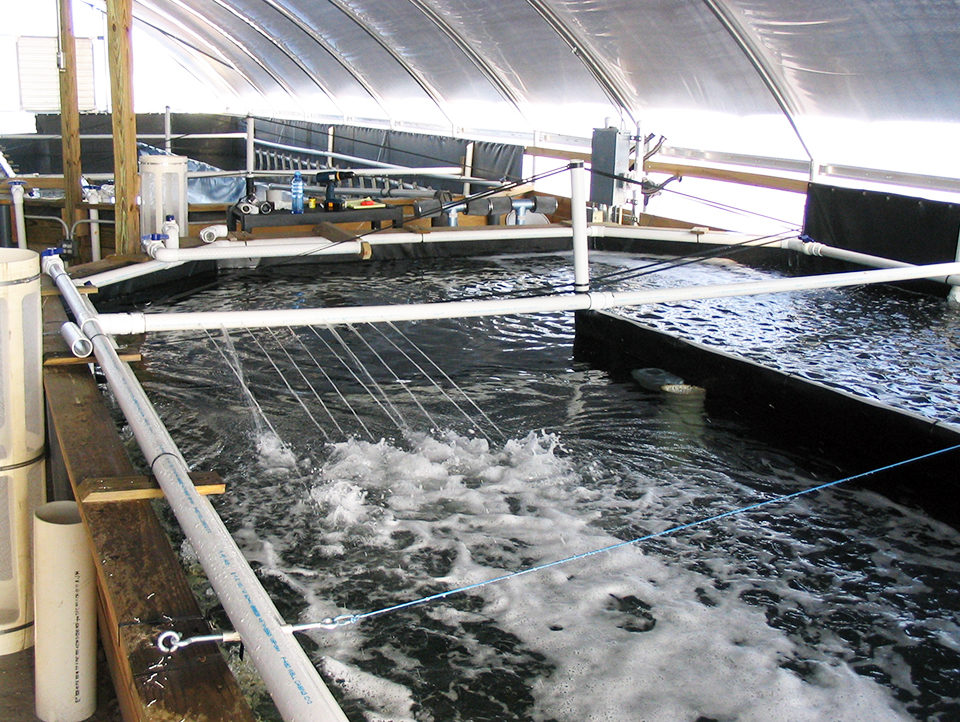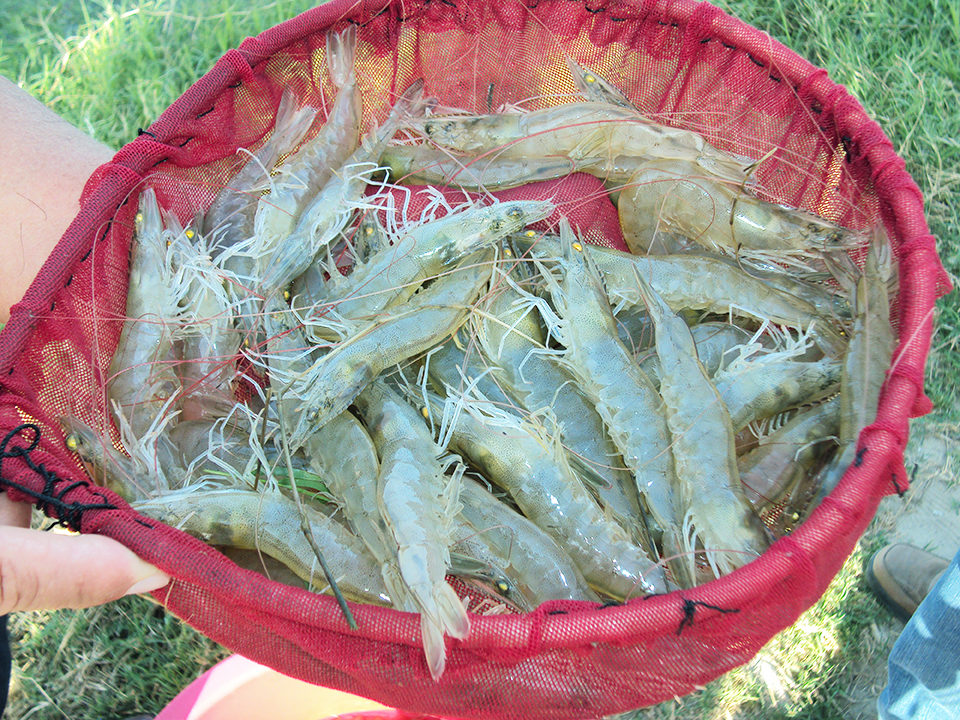Improvements in performance through genetics and nutrition will fully expressed without appropriate feeding methods

The scientific literature does not present a foundation that explains why those in the aquaculture industry feed shrimp the way they do. Instead, many of the methods employed in today’s production systems appear to have evolved from trial and error. This then led to feed charts, which recommend feeding at different percentages of body weight as the shrimp grow and at frequencies focused on keeping labor costs low.
As stocking densities increased, water quality decreased, and feed costs also increased, after which the use of feed trays evolved with the focus on improved water quality and reduced feed cost per unit weight of gain by feeding more sparingly and by using less-expensive feed.
Unfortunately, the above practices used collectively or individually often result in lower profits for shrimp farms. This is especially true because we now have animals with better genetics and the potential for growing much faster than they did 10 years ago. Our nutritional knowledge has advanced significantly, so the feed industry has the potential to produce much superior feeds.
However, the potential the industry has for significant improvements in performance through improved genetics and nutrition will not be fully expressed unless the appropriate feeding methods are practiced.
Technology requires implementation
Optimum feeding of shrimp presents perhaps the most challenging of any of the feeding practices developed for any other significant animal food production system. Therefore, making improvements will be difficult. The first steps in improving anything are recognizing its current status, establishing clear goals and defining what accomplishments are needed to reach them.
Ideal goals for feeding shrimp are to provide each animal with the exact needed nutrition in the appropriate quantity and form, and in a formula that is highly attractable and readily consumed at the exact time and location desired by the shrimp. This results in prompt consumption and efficient digestion and absorption, all of which contribute to energy efficiency and optimum physiological responses. Effective feed and feeding development requires learning to think like a shrimp.
Achieving these goals may be as difficult as learning to think like a shrimp, but both are needed now because the aquaculture industry is not taking full advantage of the technical opportunities currently available.

Traditional methods still viable?
Shrimp in the wild constantly graze. When in ponds, they are nocturnal, consuming the majority of their food at night. So one might ask, why does feeding extensively raised shrimp one or two times daily during the daylight hours work when it is contrary to natural behavior? One explanation is that some of the feed is eaten by the shrimp, but most of it fertilizes the pond and feeds the planktonic organisms that are consumed by the shrimp at night.
When shrimp are stocked at 100 per square meter, the above feeding program will not be successful. Aeration will have to be added, and by maintaining required oxygen levels and feeding throughout the day and night, shrimp performance can be enhanced. Feed-conversion ratios can also be reduced.
The traditional method of feeding shrimp using charts recommending feeding rates based on body weight should be phased out, as they are counterproductive for profit-oriented production systems. Instead, feed rates should be based on an expected rate of weekly shrimp growth and a projected realistic feed-conversion ratio. After all, if for whatever reason, shrimp are not growing, feeding at a percentage of body weight significantly overfeeds the shrimp and wastes feed. In addition, this traditional method usually underfeeds the shrimp for the first 40 days and overfeeds them during the last half of the cycle.
Feeding warm-blooded animals like chickens and pigs at a percentage of body weight is a highly desirable and effective method, as their metabolism and body temperatures are constant. Shrimp are cold-blooded, and their body temperatures – and metabolism – change with the environmental temperature. Extrapolated from the Law of Thermodynamics, growth rate and therefore feed consumption would change about 8 percent for each 1 degrees-C change in temperature.
Feeding drives production
Recirculating shrimp production is becoming economically viable, creating significant interest in the technology. One of the major causes of early recirculation failures was the use of traditional feeding methods, which resulted in substantial overfeeding and wide swings in water quality, the primary cause of shrimp mortality. By carefully applying feed in these systems based on expected shrimp gain per unit of time and on a continuous basis, greater success is being achieved. We are learning to feed shrimp the way they want to be fed.
The use of nursery systems is becoming much more prevalent in shrimp production. One of the primary objectives of these systems is to produce large numbers of animals at a defined size for stocking into ponds when temperatures or other conditions are more favorable. A significant economic benefit is that grow-out time in the production ponds is shortened considerably.
With high-density stocking at 10 to 15 animals/L, closed nursery systems require special feeds and feeding methods to guarantee animal health and performance while maintaining optimal water quality. Traditional feeding methods will compromise results.
The success of today’s shrimp industry significantly resulted from the increasing production of high-health shrimp larvae in shrimp hatcheries. Many hatcheries are finely engineered, incorporating modern and sophisticated equipment. The broodstock they use are selected for fast growth, which is clearly observed in the grow-out phase of production. Yet when these animals leave the hatchery at P.L.12, for example, their weight is usually considerably less than the 4 to 6 mg they are capable of reaching. This suggests that perhaps new feeding practices should be adapted.
Advances continue
The previous examples illustrate how changing feeding methods both have and should influence productivity in the various shrimp production systems: broodstock, maturation, hatchery, nursery and grow-out. These production systems have changed materially over the last five years, with the rate of change increasing in the future. Feed drives these production systems, since it significantly influences animal performance and water quality. Feeding practices must also change so they do not limit the potential benefits of system changes.
Recently developed acoustic feeding systems demonstrate some significant opportunity for the future. In these systems, the automatic equipment delivers feed based on sounds emitted by shrimp when they are feeding. These sounds, which are monitored by a type of microphone installed under the water, provide feedback to the delivery equipment. Not only does this technology result in improved growth rates at lower feed-conversion ratios and better water quality, but it records the feeding behavior of the shrimp on a continuing basis over time.
Bottom Line: Pretend you are a shrimp and then answer the question “How do I want to be fed?”
(Editor’s Note: This article was originally published in the May/June 2014 print edition of the Global Aquaculture Advocate.)
Authors
-

Thomas R. Zeigler, Ph.D.
Senior Technical Advisor
Past President and Chairman
Zeigler Brothers., Inc.
P. O. Box 95
Gardners, Pennsylvania 17324 USA -
Cheryl Shew
Sales Specialist
Zeigler Brothers., Inc
P. O. Box 95
Gardners, Pennsylvania 17324 USA
Tagged With
Related Posts

Intelligence
A land grab for salmon (and shrimp) in upstate New York
The operators of Hudson Valley Fish Farm see their inland locale as a pilot to prove that land-based fish farming, located in close proximity to major metropolitan markets, can be successful.

Aquafeeds
A look at phospholipids in aquafeeds
Phospholipids are the major constituents of cell membranes and are vital to the normal function of every cell and organ. The inclusion of phospholipids in aquafeeds ensures increased growth, better survival and stress resistance, and prevention of skeletal deformities of larval and juvenile stages of fish and shellfish species.

Health & Welfare
Acclimating shrimp postlarvae before pond stocking
Shrimp postlarvae acclimation before stocking into the various growout systems (ponds, raceways, tanks) is a critical – and often overlooked, sometimes taken for granted – step in the shrimp culture process. Various water quality parameters should be changed slowly so that the young shrimp have the time to gradually adapt to the new conditions.

Aquafeeds
Alternative feed ingredient universe to convene at F3 meeting
What started out as a simple yet ambitious contest to drive innovation in the aquafeed sector has evolved into a fully global competition – and collaboration – amongst ingredient suppliers and feed manufacturers.


